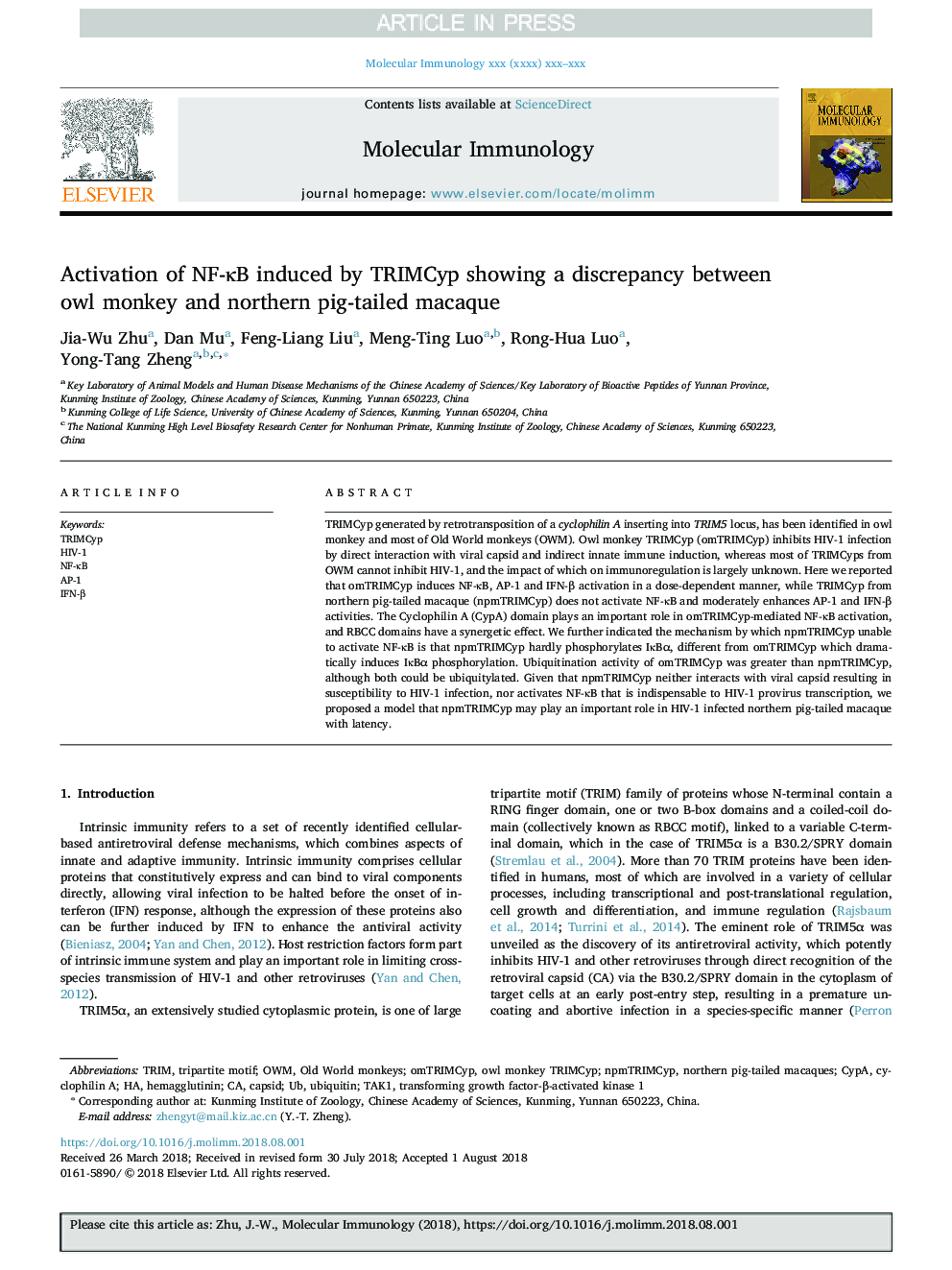| Article ID | Journal | Published Year | Pages | File Type |
|---|---|---|---|---|
| 9955390 | Molecular Immunology | 2018 | 8 Pages |
Abstract
TRIMCyp generated by retrotransposition of a cyclophilin A inserting into TRIM5 locus, has been identified in owl monkey and most of Old World monkeys (OWM). Owl monkey TRIMCyp (omTRIMCyp) inhibits HIV-1 infection by direct interaction with viral capsid and indirect innate immune induction, whereas most of TRIMCyps from OWM cannot inhibit HIV-1, and the impact of which on immunoregulation is largely unknown. Here we reported that omTRIMCyp induces NF-κB, AP-1 and IFN-β activation in a dose-dependent manner, while TRIMCyp from northern pig-tailed macaque (npmTRIMCyp) does not activate NF-κB and moderately enhances AP-1 and IFN-β activities. The Cyclophilin A (CypA) domain plays an important role in omTRIMCyp-mediated NF-κB activation, and RBCC domains have a synergetic effect. We further indicated the mechanism by which npmTRIMCyp unable to activate NF-κB is that npmTRIMCyp hardly phosphorylates IκBα, different from omTRIMCyp which dramatically induces IκBα phosphorylation. Ubiquitination activity of omTRIMCyp was greater than npmTRIMCyp, although both could be ubiquitylated. Given that npmTRIMCyp neither interacts with viral capsid resulting in susceptibility to HIV-1 infection, nor activates NF-κB that is indispensable to HIV-1 provirus transcription, we proposed a model that npmTRIMCyp may play an important role in HIV-1 infected northern pig-tailed macaque with latency.
Keywords
Related Topics
Life Sciences
Biochemistry, Genetics and Molecular Biology
Molecular Biology
Authors
Jia-Wu Zhu, Dan Mu, Feng-Liang Liu, Meng-Ting Luo, Rong-Hua Luo, Yong-Tang Zheng,
